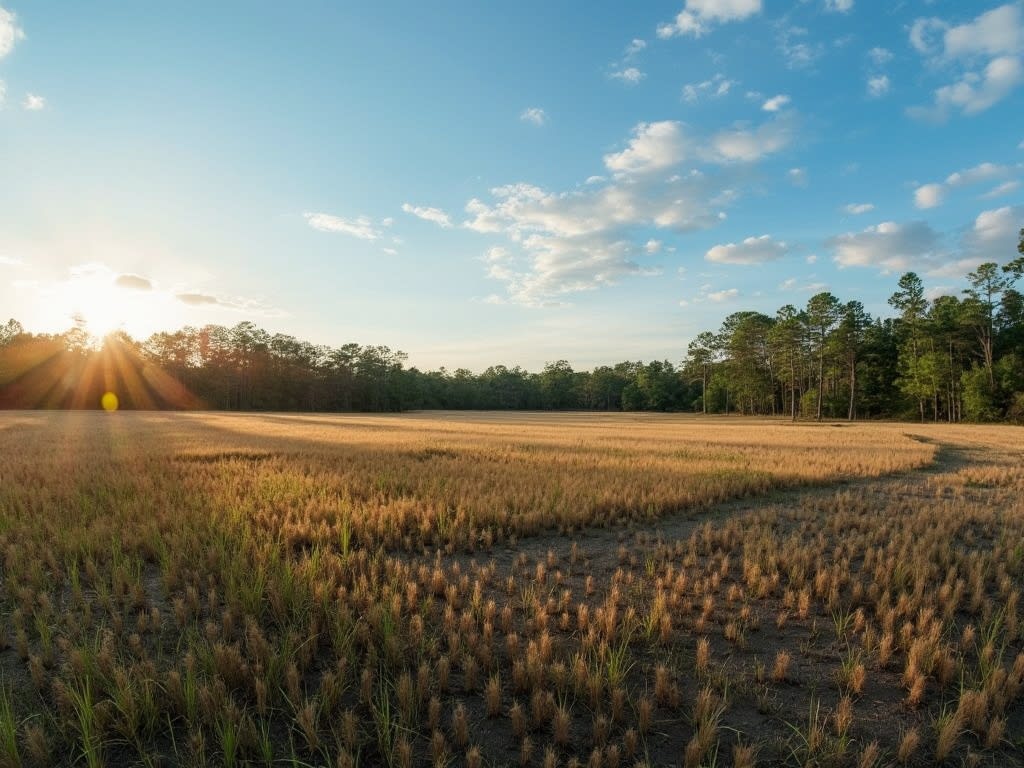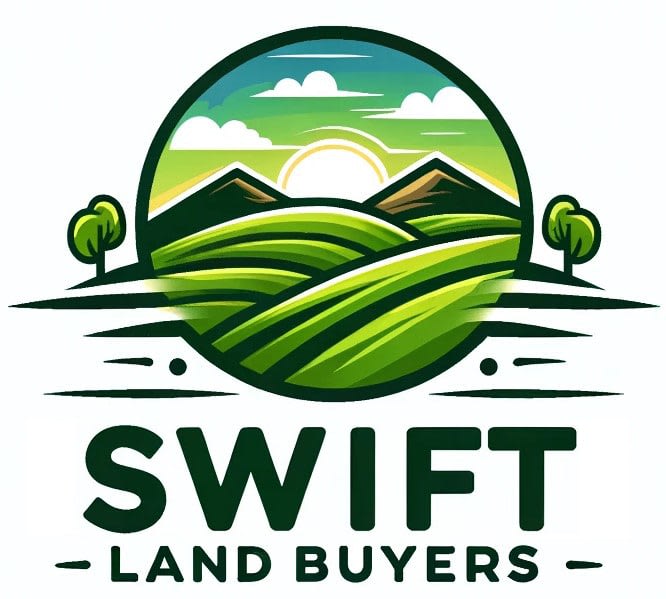South Carolina’s land market presents excellent investment opportunities, backed by substantial population growth of 10.7% from 2010-2020 and consistent demand across tourism, manufacturing, and agriculture sectors. Current housing conditions favor buyers with a three-month inventory and median home prices at $369,200. I’ve found that South Carolina land investors can capitalize on multiple income sources through timber sales, hunting lease arrangements, and farming operations.
Key Takeaways:
- Population expansion and economic strength across tourism, manufacturing, and agriculture sectors drive sustained land value growth
- Agricultural land prices shot up 44% between 2010 and 2022, climbing from $2,740 to $3,960 per acre
- Tax benefits are available for primary homes and agricultural properties through a favorable 4% assessment ratio
- Rural properties face higher costs due to natural disaster risks and infrastructure limitations
- Urban development faces restrictions from strict zoning laws and market constraints, impacting potential investment returns
Investment Potential of South Carolina Land: Current Market Analysis
Population and Housing Trends
South Carolina’s strong population growth of 10.7% between 2010-2020 signals sustained demand for housing and land. The current market shows positive signs with housing inventory increasing by 12.8% in December 2024, offering more options for potential investors. With 28,000 homes available and a three-month supply, buyers have improved negotiating power compared to recent years.
Market Indicators and Financial Considerations
The median home price of $369,200 remains competitive compared to neighboring states. I’m seeing several key market factors that influence investment decisions:
- Home sales have decreased by 10.2% year-over-year, creating potential buying opportunities
- Current mortgage rates sit at 6.34% as of July 2024
- Rates are predicted to stabilize at 6.3% by 2025
- The three-month housing supply indicates a balanced market
- Population growth continues to drive long-term demand
These numbers point to a market that’s adjusting from the recent seller’s market but maintains strong fundamentals for long-term appreciation. While higher interest rates have cooled immediate demand, the combination of population growth and stabilizing rates suggests favorable conditions for land investment, particularly for those planning to hold assets for 5+ years.

Economic Drivers Boosting Land Values
Tourism and Manufacturing Impact
South Carolina’s land values continue to rise thanks to powerful economic forces. The state’s prime tourist destinations – Myrtle Beach, Hilton Head, and Charleston – pull in over 30 million visitors yearly, creating consistent demand for commercial and residential properties. This tourism boom pairs with major manufacturing presence from automotive and aerospace giants. BMW, Boeing, Volvo, and Mercedes Benz Vans maintain large operations, bringing stable employment and attracting skilled workers who need housing.
Agricultural and Demographic Trends
The agricultural sector shows impressive growth, with farm real estate values jumping from $2,740 per acre in 2010 to $3,960 in 2022. This 44% increase reflects the state’s agricultural strength and development potential. I’ve noticed steady population growth from retirees moving to South Carolina, drawn by:
- Mild winter temperatures ideal for year-round outdoor activities
- Lower property tax rates compared to northeastern states
- Reduced cost of living
- No tax on Social Security benefits
- Extensive recreational options
These combined factors create sustained pressure on land prices while supporting long-term value appreciation. The mix of industrial expansion, tourism dollars, and retirement migration establishes multiple paths for property value growth.

Revenue Generation Opportunities
Forest and Agricultural Income
South Carolina’s vast forests create substantial timber income potential, with over 5 million acres available for harvesting operations. I’ve found timber remains one of the most stable long-term investments in the state’s natural resources.
Additional Revenue Streams
Multiple income sources exist beyond timber production:
- Hunting leases offer steady annual returns through whitetail deer, wild turkey, and small game access rights
- Agricultural leases provide income from row crops, orchards, and grazing land
- Sand and gravel mining rights can generate mineral royalties on suitable properties
The right property location matched with smart land management can create diverse revenue streams. Landowners who combine these opportunities often see higher returns than single-use properties. If you’re considering selling land for cash in South Carolina, understanding these revenue potentials can help maximize your property’s value.
Property Tax Considerations
Assessment Ratios and Tax Structure
South Carolina’s property tax system ranks as the 17th highest in the United States, but offers distinct advantages for specific property types. Primary residences and agricultural lands benefit from a favorable 4% assessment ratio, making these properties more tax-efficient investments. Manufacturing and utility properties face a higher 10.5% assessment ratio.
I recommend understanding the three-part tax calculation before investing:
- Fair market value serves as the starting point
- Assessment ratio applies based on property type (4% or 10.5%)
- Local millage rate determines final tax amount
This structure creates opportunities for strategic property investment. Primary residences get substantial tax advantages compared to commercial or manufacturing properties. For investors looking at multiple property types, residential and agricultural lands often provide better tax efficiency with their lower assessment ratios. The predictable nature of these fixed percentages helps in planning long-term investment costs and potential returns. Smart investors can leverage these different ratios to optimize their property portfolio’s tax burden.
Environmental and Infrastructure Challenges
Natural Disaster Risks
South Carolina faces significant hurricane and flooding threats, particularly along the coast. Property damage from these events can drastically impact land values and insurance costs. According to the South Carolina Emergency Management Division, coastal properties experience a 26% higher risk of storm damage compared to inland areas. Timber investments also face challenges from pine beetle infestations, which have affected up to 15% of forest lands in recent years.
Infrastructure and Soil Limitations
Rural South Carolina land often lacks essential infrastructure, creating additional costs for buyers. Here are key considerations before purchasing:
- Water access: Many rural properties require well installation, costing $5,000-15,000
- Power connectivity: Extended power lines can cost $25-50 per foot
- Internet availability: Limited broadband coverage affects 21% of rural areas
- Soil quality: Heavy farming has depleted nutrients in many regions, requiring soil amendment costs
- Septic systems: Often needed in areas without municipal sewer access
I recommend thorough due diligence on these potential challenges before purchasing land. While solutions exist for most infrastructure issues, they can add substantial costs to your investment. Consider working with local utility companies to assess connection feasibility and costs before finalizing any land purchase.
Land Use Restrictions and Market Limitations
Zoning and Development Constraints
South Carolina’s strict zoning regulations can limit your development options significantly. Local ordinances often restrict property use to specific purposes like residential, agricultural, or commercial activities. I’ve found that many counties require minimum lot sizes of 2-5 acres for new construction, which affects potential subdivision plans. These restrictions directly impact your ability to maximize returns on land investments. When researching the best counties to buy land in South Carolina, pay close attention to local zoning regulations.
Market Availability and Growth Patterns
Finding suitable land parcels poses distinct challenges. Here are the key market limitations to consider:
- Major urban areas like Charleston and Columbia face severe inventory shortages, driving prices up but limiting purchase opportunities
- Rural properties typically appreciate at 2-3% annually, below the state average for developed land
- Many parcels, especially in former mining regions, don’t include mineral rights with purchase
- Agricultural zoning in prime locations often requires lengthy approval processes for rezoning
The combination of these factors creates a challenging investment landscape. I’ve noticed that successful investors focus on mid-sized towns with growth potential, where restrictions are less severe and appreciation rates remain steady. Consider targeting areas with approved future development plans or those adjacent to existing commercial zones for better investment potential. According to South Carolina Department of Commerce, growth corridors near major highways offer the best investment potential for land purchases.

